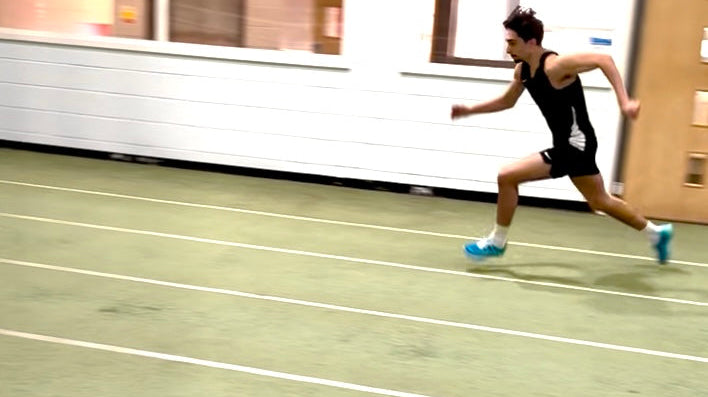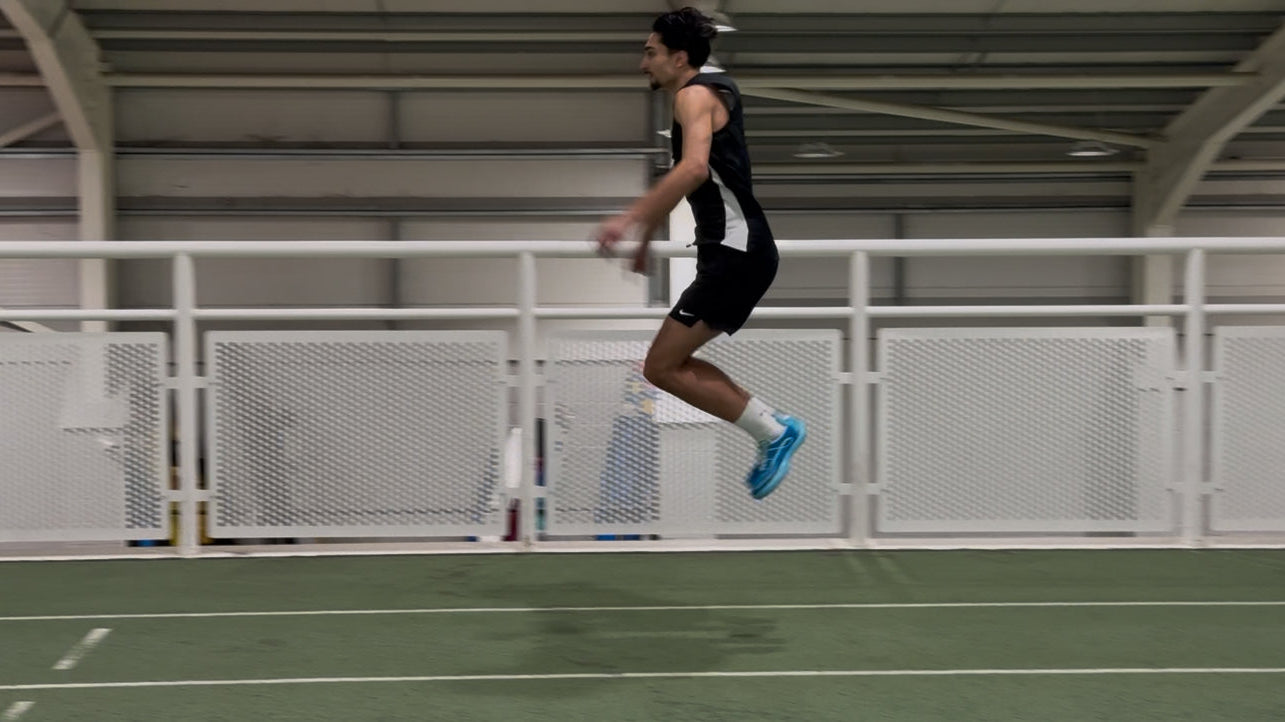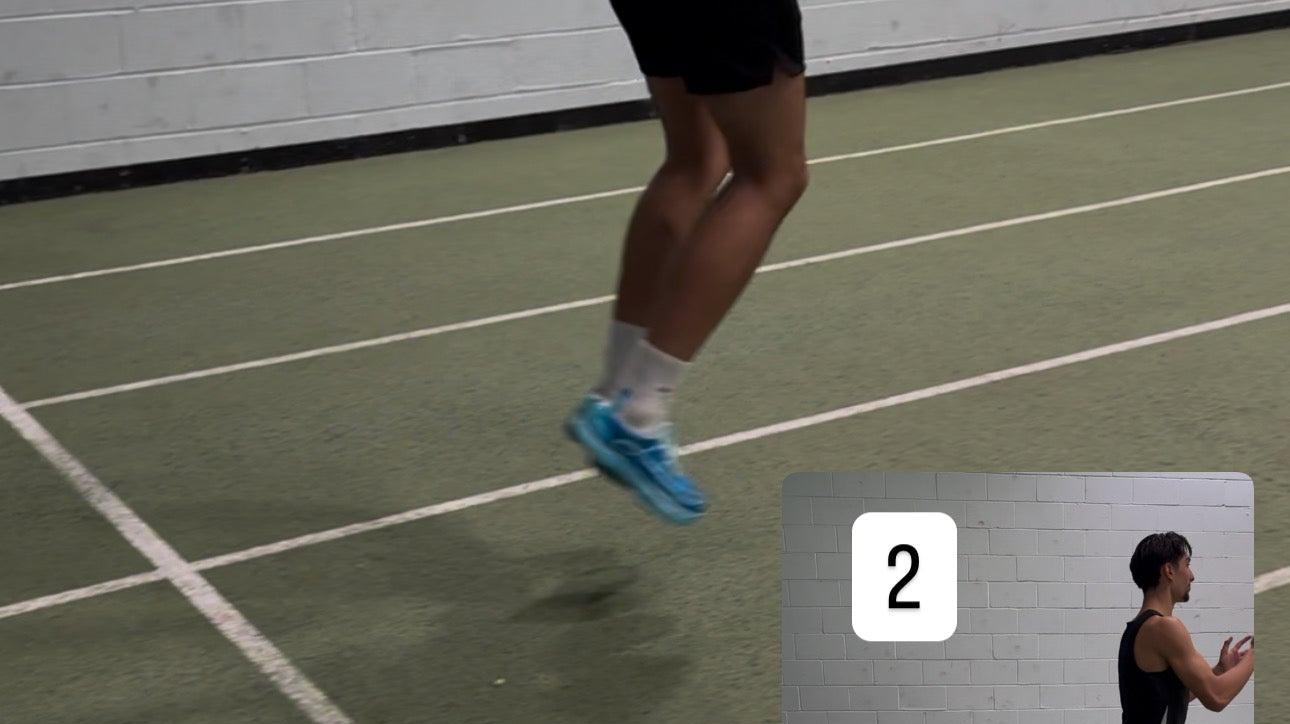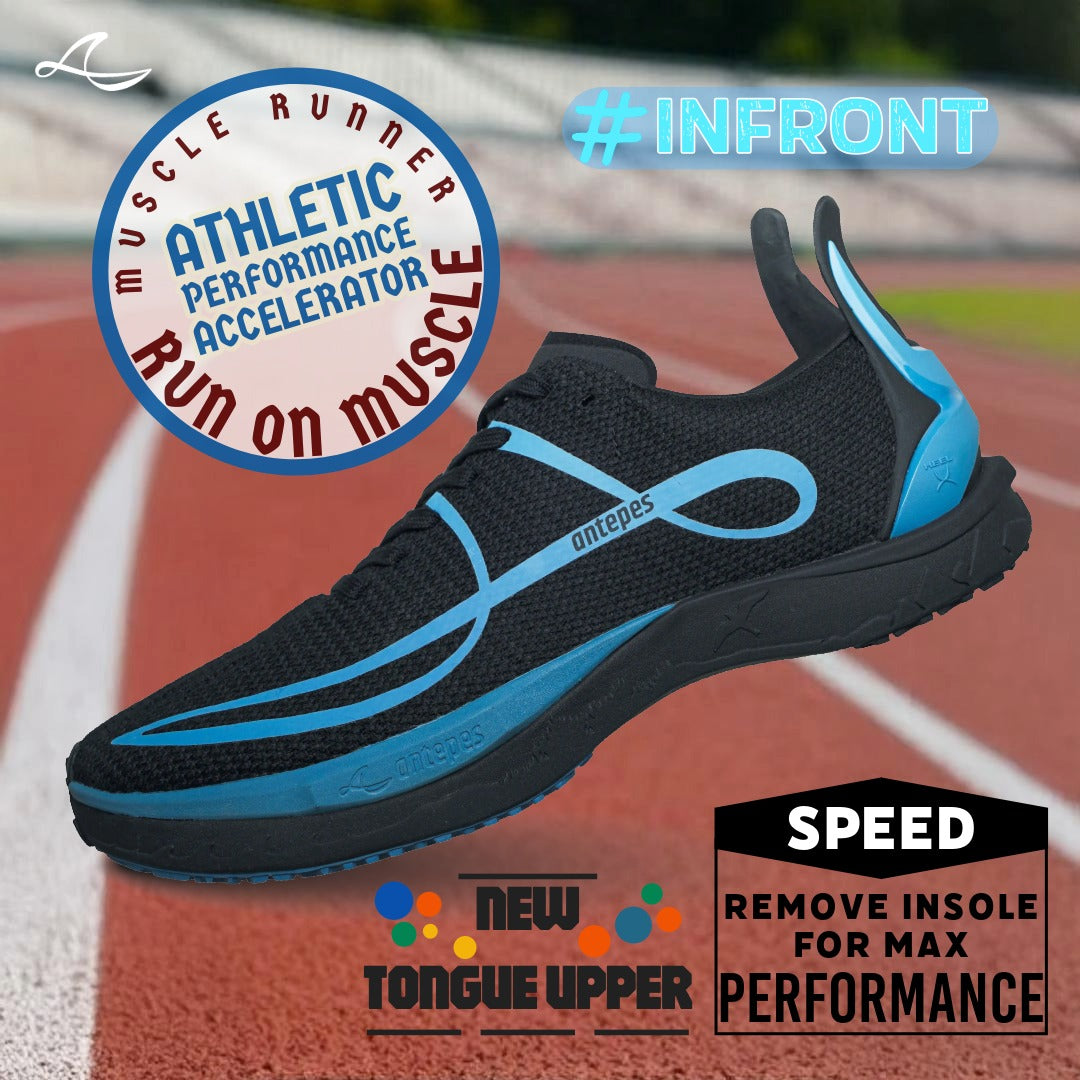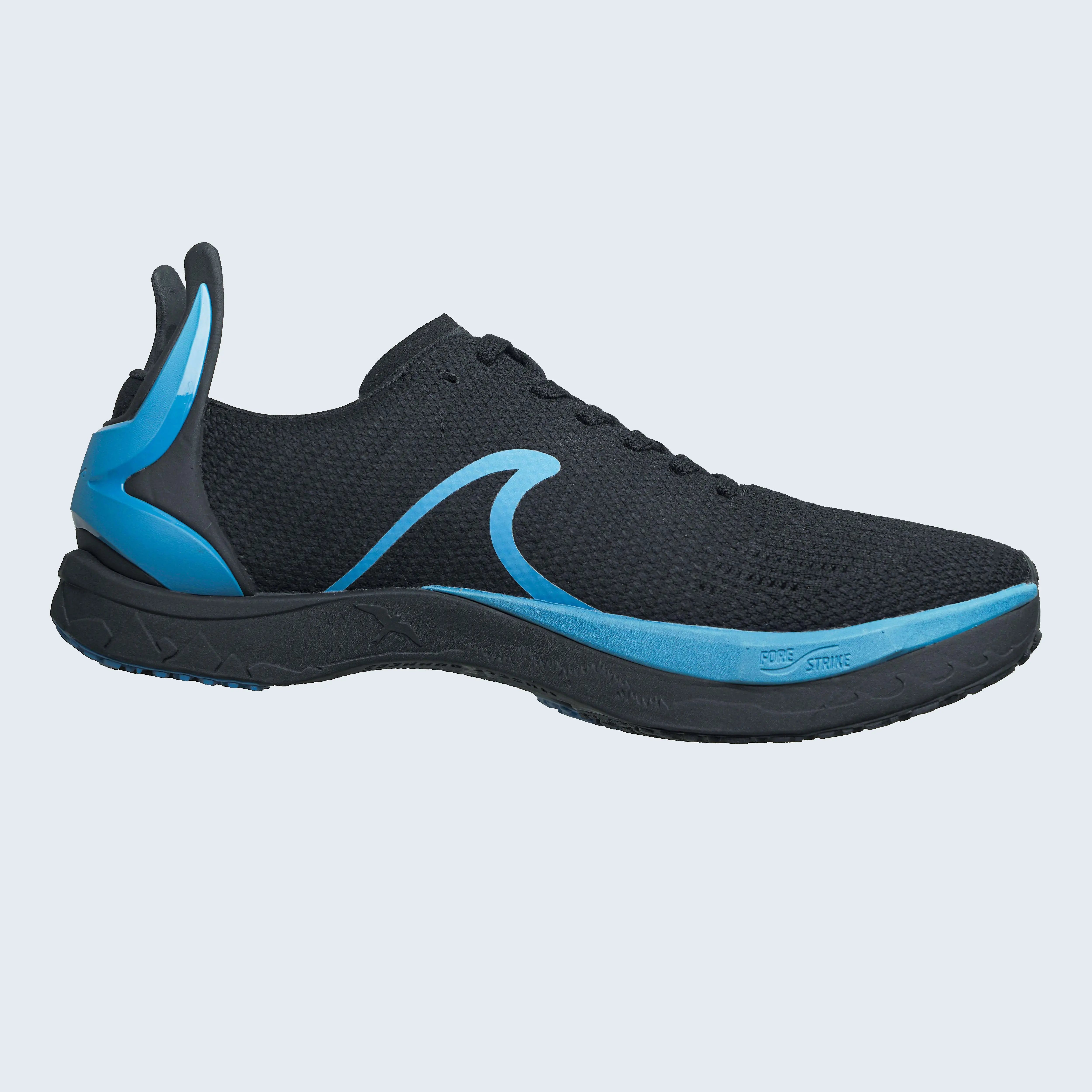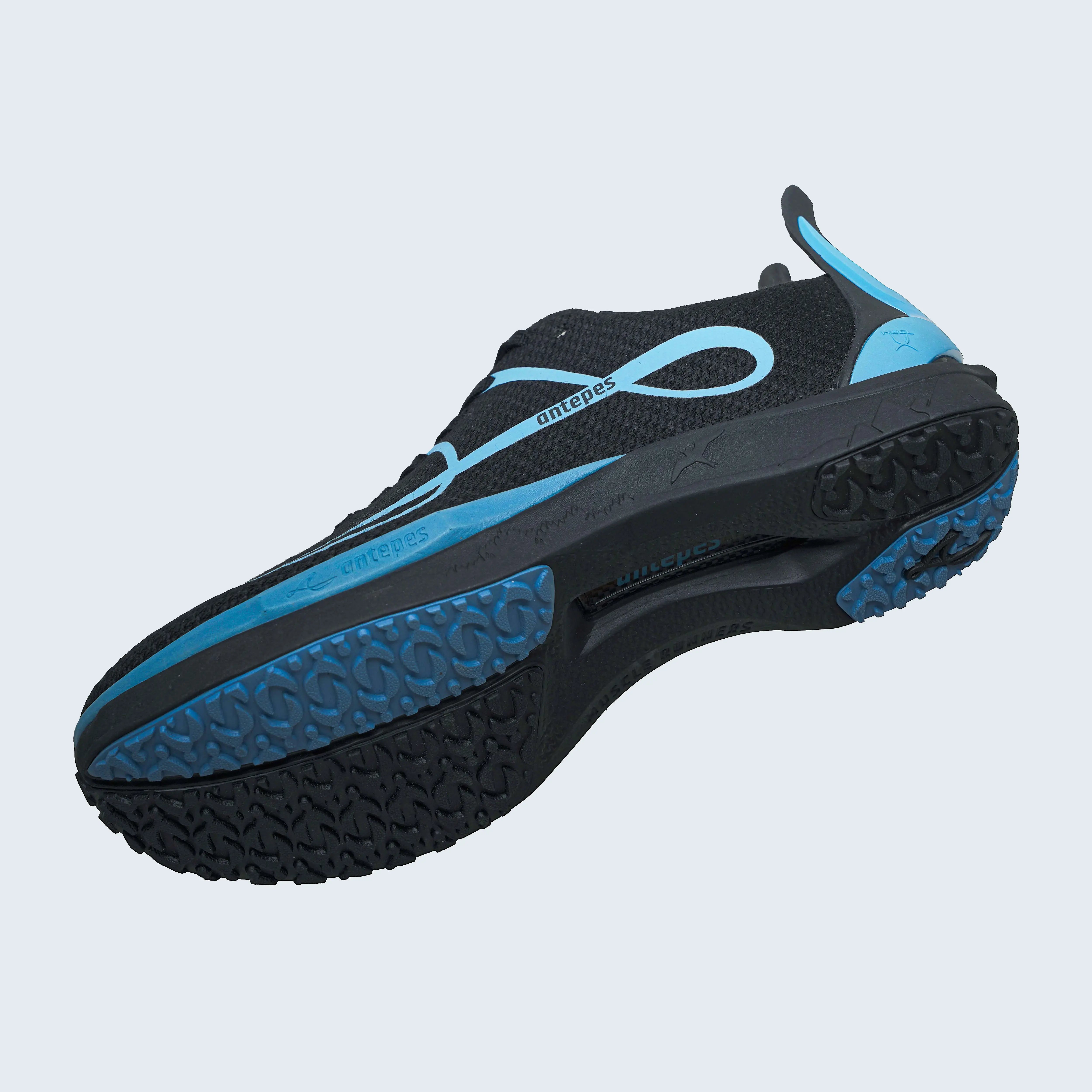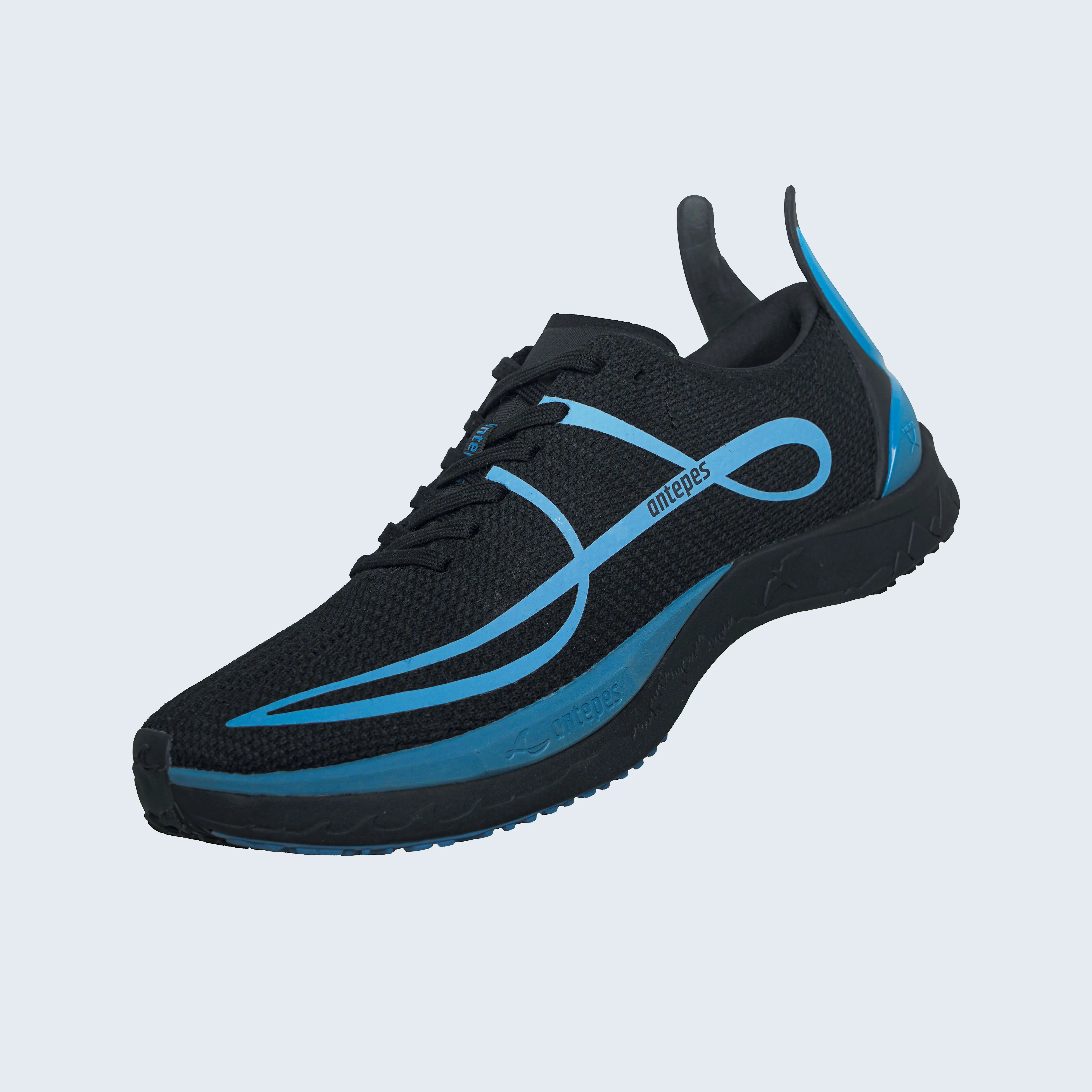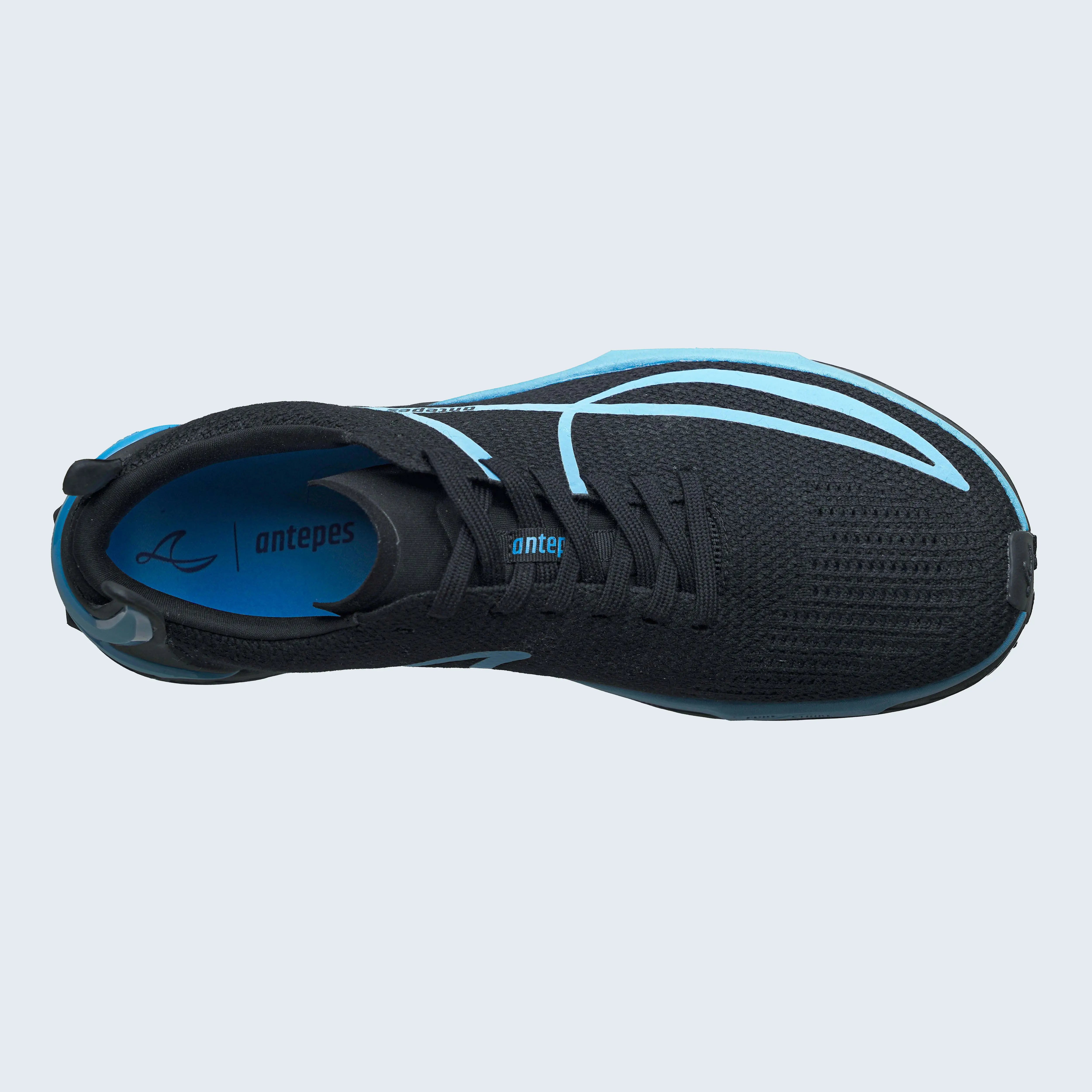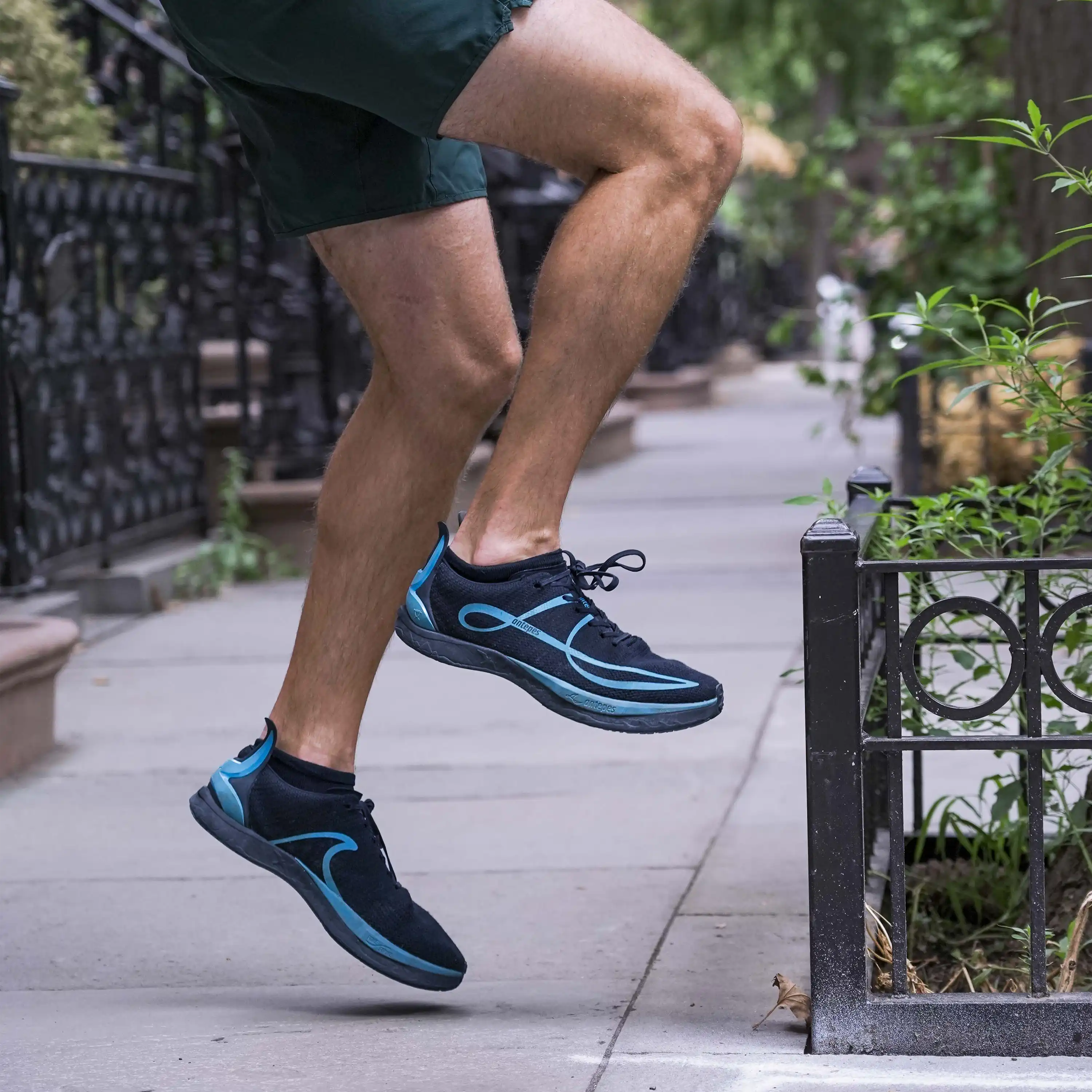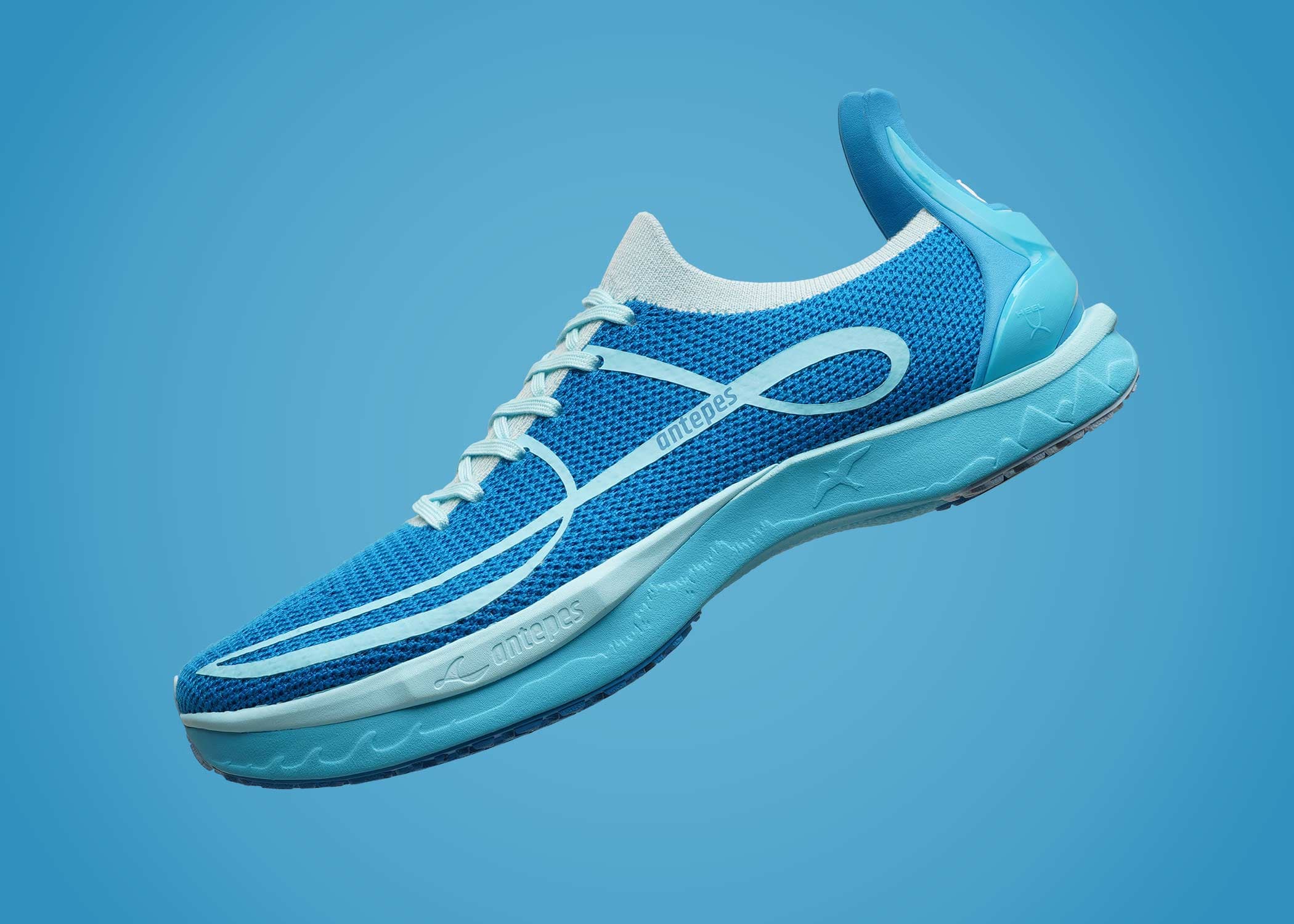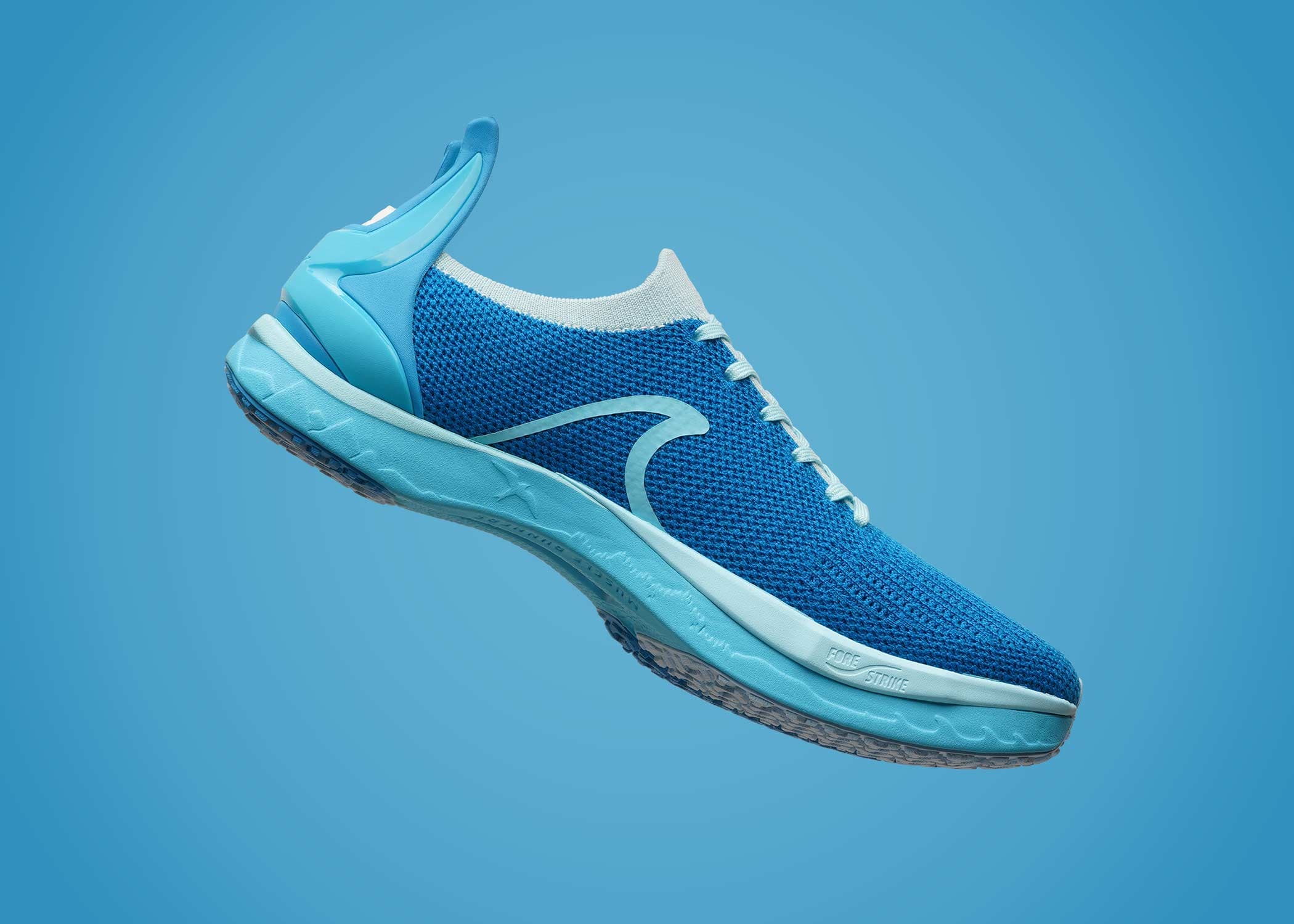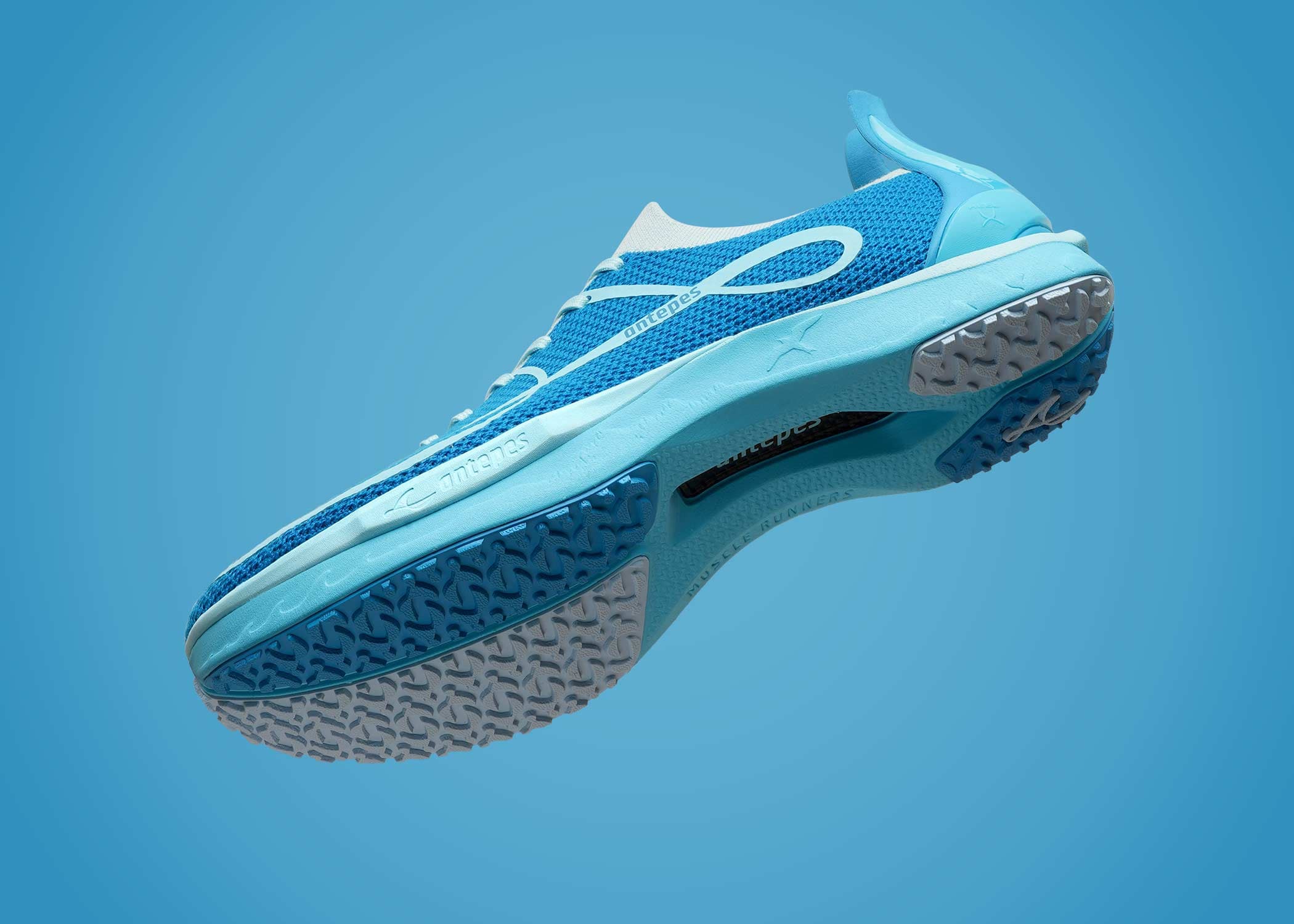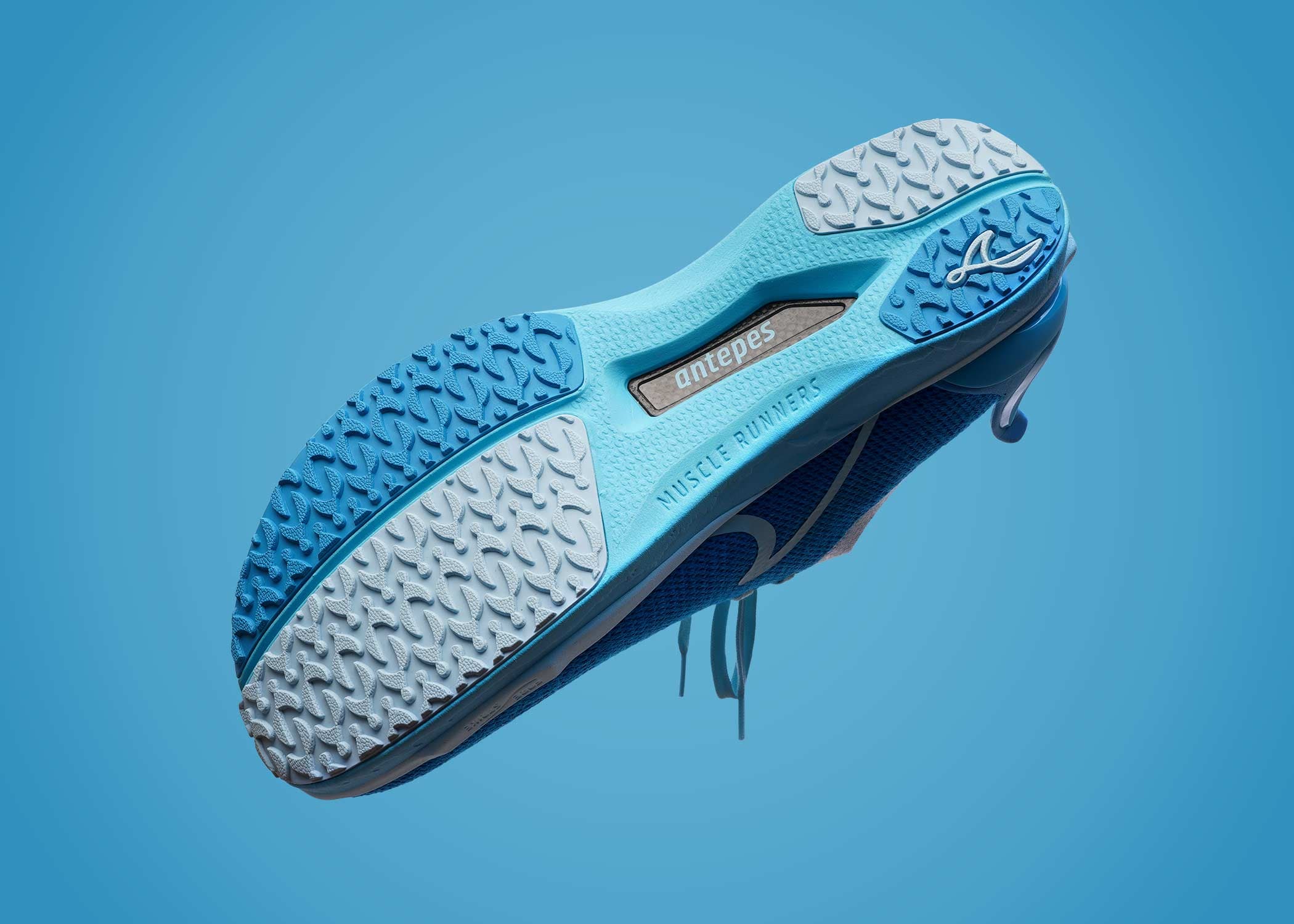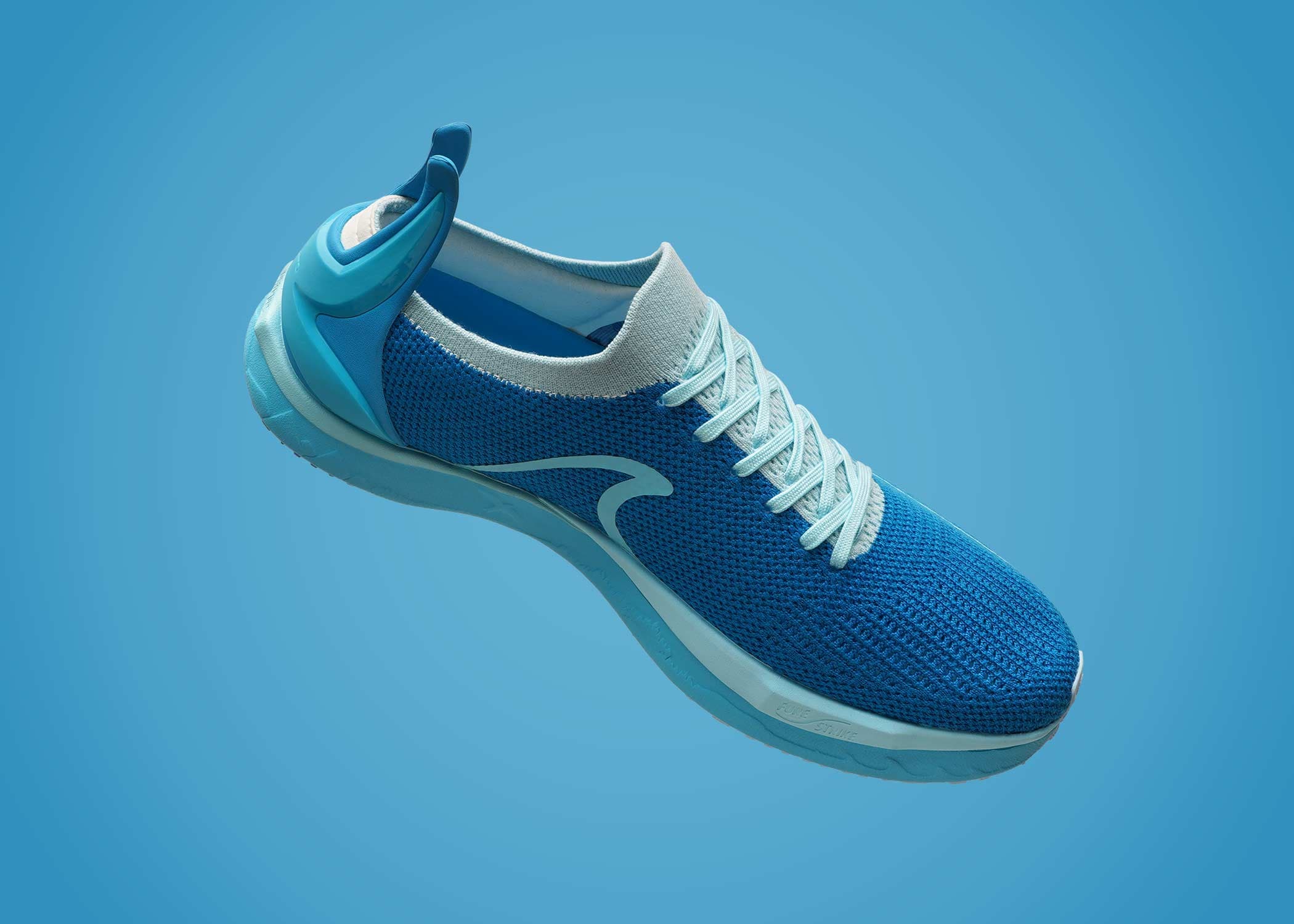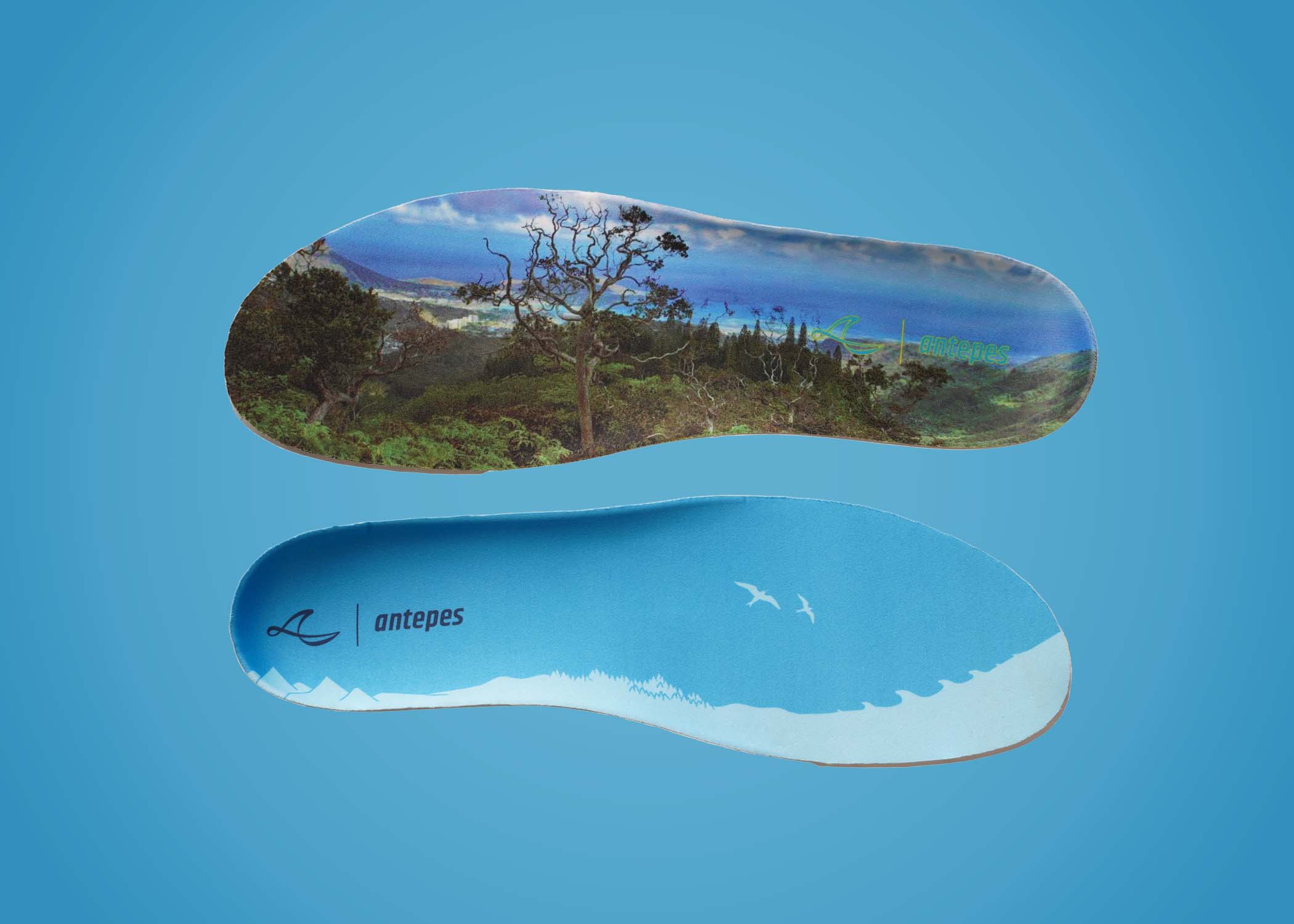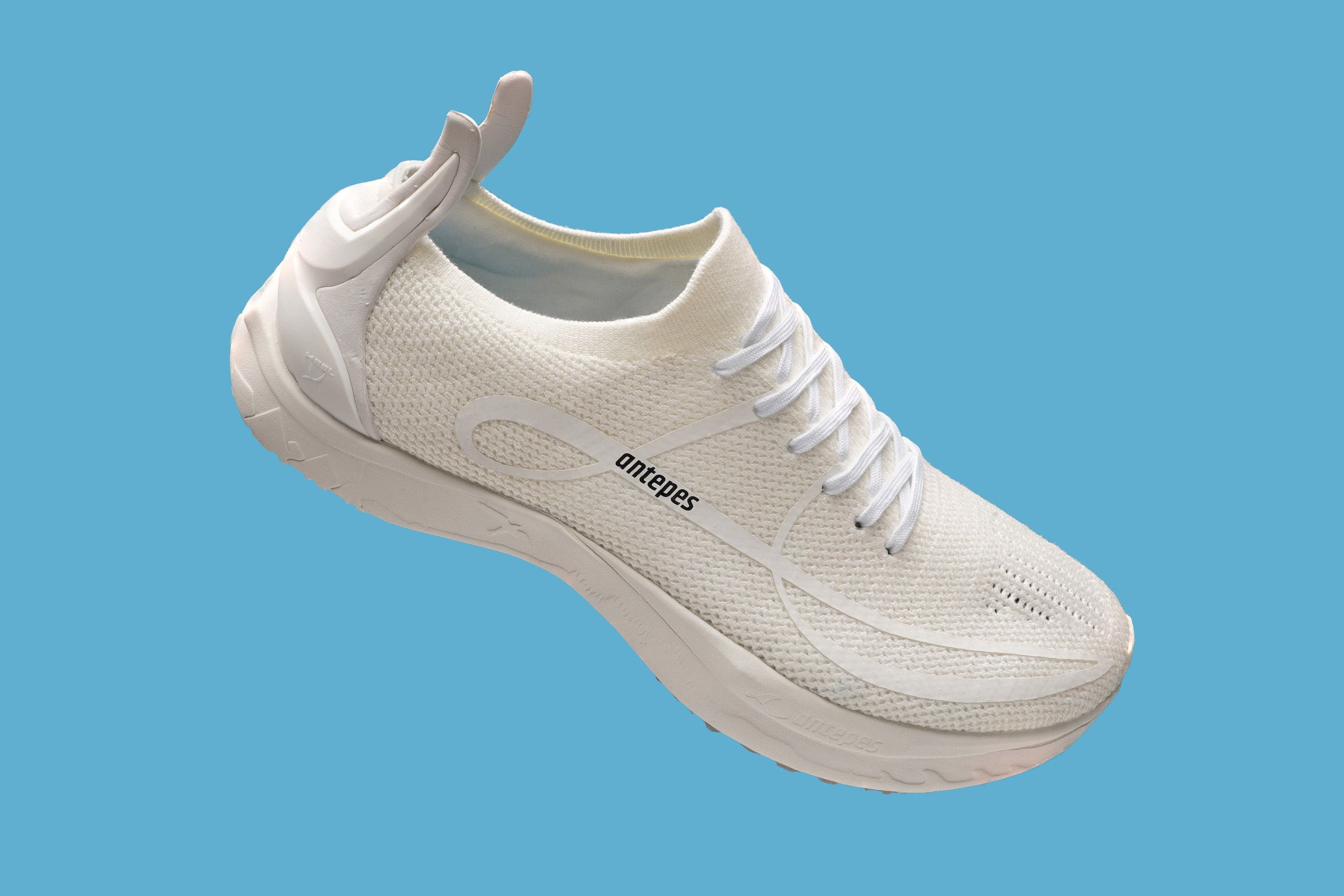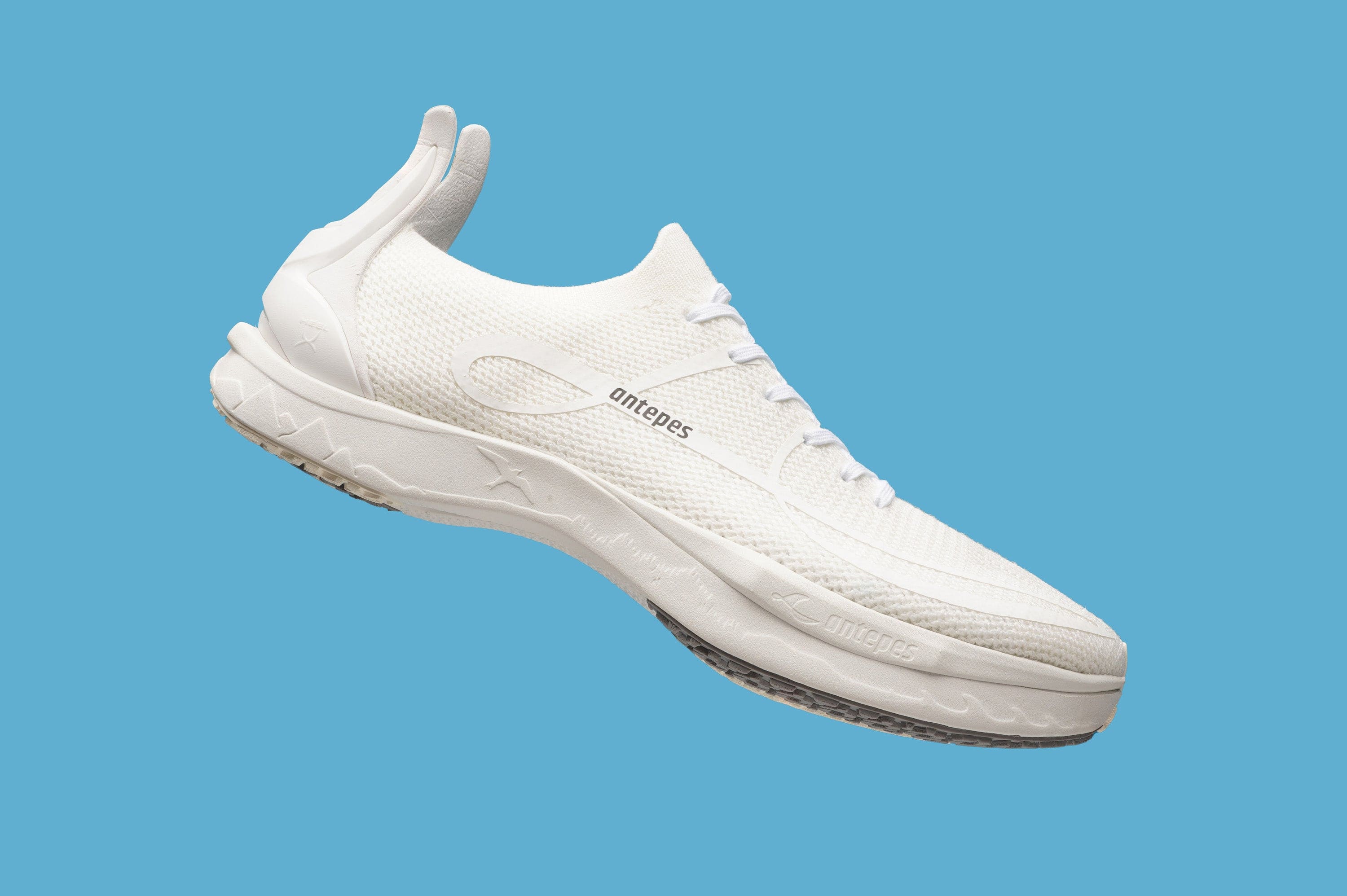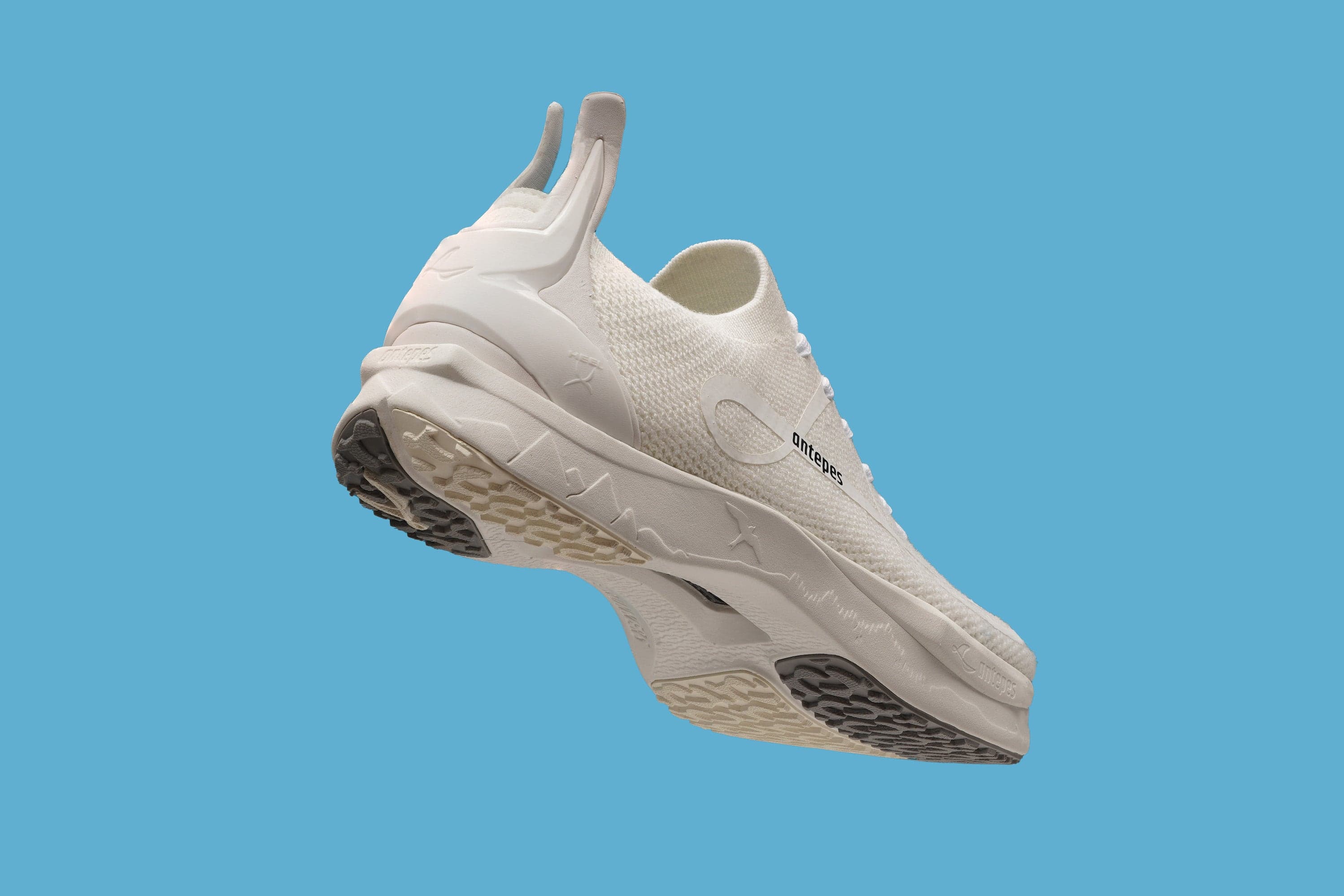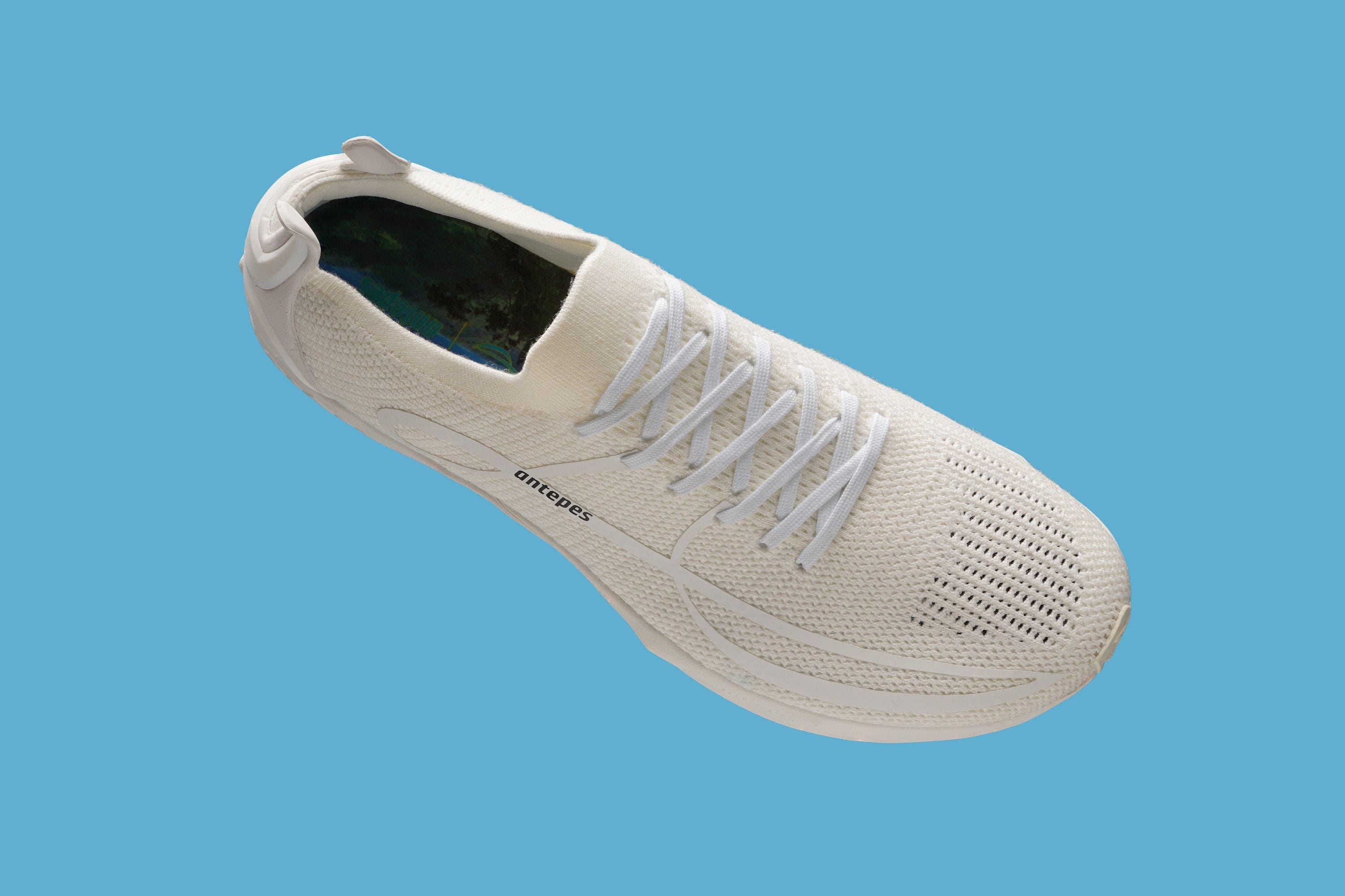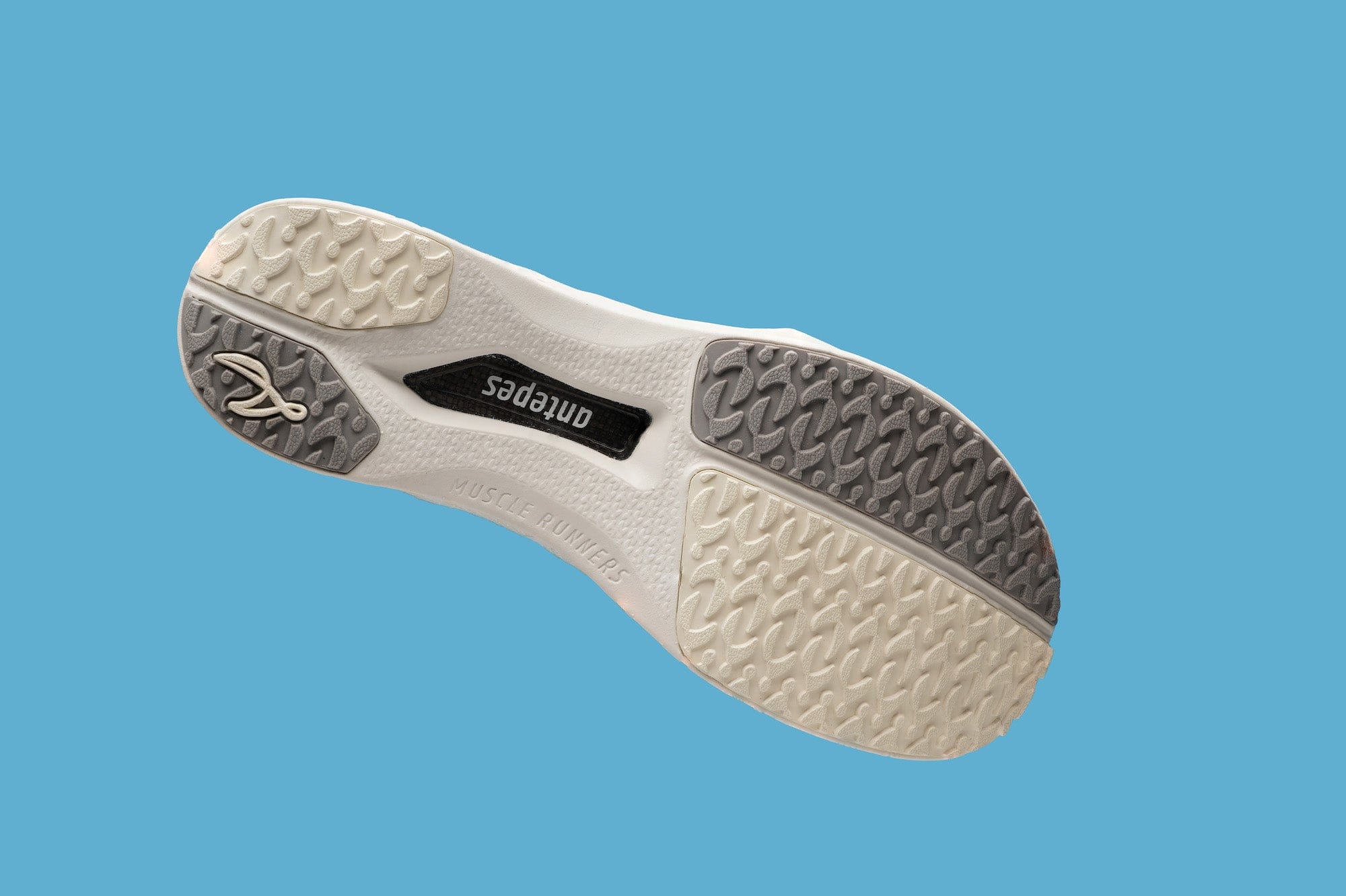Have you ever felt heavy legged and lacking bounce when you’re running? It’s more than likely the result of an ineffective foot-strike (probably heel led) and lower legs which need better conditioning. The calf muscles and Achilles tendons are vital when it comes to powerful fast running.
Muscle Runners are designed to maximize energy return and to switch on your calf and Achilles tendons so they can better power your running. And the added benefit is that they can specifically strengthen these areas.
The shoes feature Heel gain™ and ForeSpring™ carbon plate technology designed to achieve these aims. Basically, the sprint-spike-like Muscle Runners are designed to keep you on your forefoot. This makes it so much more easier to rotate over your foot as you move from stride to stride and to access the power of your lower leg. Shoes with a flatter and a larger ground contact area can encourage a heel strike, dull reaction and partly switch off the lower leg muscles.
Muscle Runners push you onto your toes
If you’re a sprinter or speed-based athlete then you will be familiar with forefoot striking and the benefits this can bring. You’ll also likely have better conditioned lower legs and Achilles tendons. If you’re a distance runner and/or more of a heel striker than you will need to introduce the benefits the Muscle Runners can give progressively. Note: we do recommend regardless of your speed that you progress systematically in terms of Muscle Runner use. Think of them as a new piece of training kit - like weight training you need to progressively overload to create adaptation.
Calf muscle
There are two main calf muscles - the larger gastrocnemius and the smaller soleus. Both are crucial for running at all speeds. These muscles need to be great at absorbing energy before returning it. This happens when they lengthen on foot-strike – known as an eccentric muscular action. They then shorten to propel you forwards - known as a concentric muscular action. All this of course happens in milliseconds.
Many of us may have had Achilles issues - these bands of soft tissue return energy on foot-strike acting very much like a human spring. If they become sore - then the “spring” loses its responsiveness and running becomes difficult if not impossible.
However, the great news is that there is much you can do to strengthen your Achilles and your calf muscles to beat injury and improve energy return. And your Muscle Runners can play a big part in this. We recommend that you should always include this work in your training. And we recommend that you mix and match your training foot-wear to reduce overuse of the lower legs and make sure you follow a training plan which provides adequate rest and recovery.
Eccentric training
We also advise that in nearly all your workouts with or without your Muscle Runners you include some eccentric exercises and focussed running drills. This muscular action can protect soft tissue from injury. Sports coaches and athletic trainers call this pre-habilitation
Lower leg and Achilles strengthening exercises

1: Marching drills in Muscle Runners
Progress forwards by driving the foot of each leg in turn into the ground under your hips from a parallel to the ground position. Coordinate arms with legs.
The key is to maintain ground contact on the forefoot and to not let the heel touch the ground. You should actively resist your heel dropping whilst staying on the forefoot of the Muscle Runners. Holding your foot up prior to foot-strike will aid with this.
Do: 2-3 x 20m
2: Cycling drills in Muscle Runners
On the spot, cycle your legs in a running action (making sure your heels travel behind your hips). Coordinate arms with legs. Keep pressing your hips up (stay tall). Think that you are “pushing pedals around on a bike” to get the movement right. Let your foot travel at mid-shin height on each cycle. Strike on your forefoot and keep your toes up. The unique design of the Muscle Runners will facilitate this.
Do: 3-4 x 5-8sec
The above drill can also be done with forward travel - for example over 20m.
3: Heel lowers (no shoes)
Stand and raise up onto tip-toes. Next slowly lower your heels to a 4-5 count. Be deliberate. This will emphasise the eccentric muscular action and strengthen your Achilles tendons. In fact, this exercise has been shown to be great for Achilles’ tendon recovery when suffering from tendonitis or similar Achilles issues.
Do: 4 x 10 (can also be done with weights and one leg at a time.)
4: Bent knee heel lowers
If the knee is bent, the soleus does more work out of the two main calf muscles. Sprint acceleration is heavily dependent on the soleus. If there is a weakness in this area there collapsing in on foot-strike and poor energy absorption and return will be likely.
Sit on a chair, feet flat on the ground and extend your ankles, then slowly lower your heels as with the previous exercise. You can press down using your hands around your knees to apply resisting force or place a weights plate across your thighs.You can of course use specialist weight training equipment.
Do: 3-4 x 8 (use a 3-4 count slow lower)



